Being at home during the pandemic might have had its fair share of challenges, but one of the perks for pet guardians was having the opportunity to spend more time with your pooch. You no doubt relished your time together, enjoying some extra playtime and cuddles in between Zoom meetings and work assignments. Dogs and humans are already known to form close bonds. Add in the convenience of being together 24 hours a day, and your connection is probably stronger than ever now.
But all good things must come to an end. As pet guardians anticipate a return to the workplace, you might also be wondering how the change in your routine will affect your dog, namely that they will be left at home alone for longer stretches of time again. Of course, our pets can’t understand that business is back to usual – they just want your attention and company! Which is why it’s likely your dog could experience some separation anxiety as you begin to ease into the “new normal.”
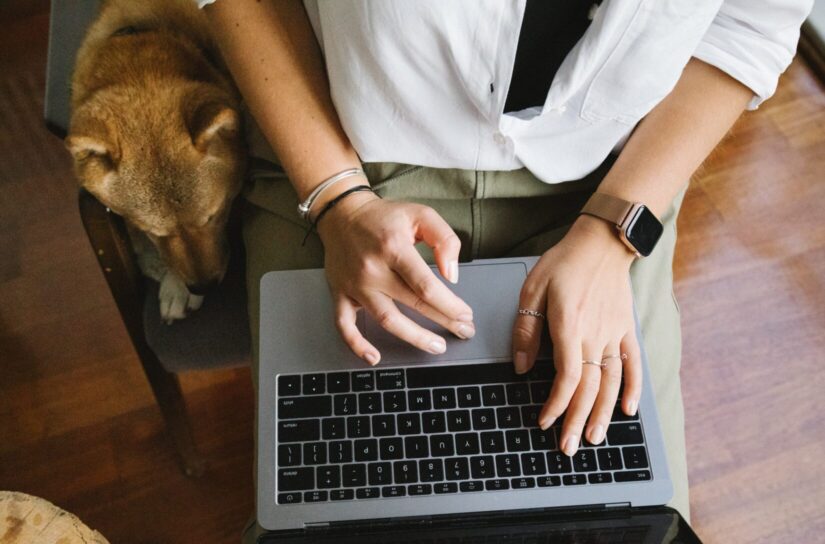
In order to make this transition as smooth as possible for both you and your beloved pet, here are some tips on how to prepare your pooch for a new routine.
Identify signs of stress and anxiety
First, it’s important to distinguish between what’s normal type of behaviour for your dog, and what they are typically triggered by, and when they are undergoing signs of separation anxiety.
According to Dr. Karen van Haaften, the BC SPCA’s senior manager of behaviour and welfare, dogs can suffer from different kinds of anxiety – triggered by certain noises or specific situations such as car rides or nail trims. Dogs can also suffer from more generalized anxiety in which there are multiple triggers for anxiety. “Some dogs are more prone to anxiety due to genetic factors or lack of socialization during their sensitive socialization period of six to 16 weeks,” she says.
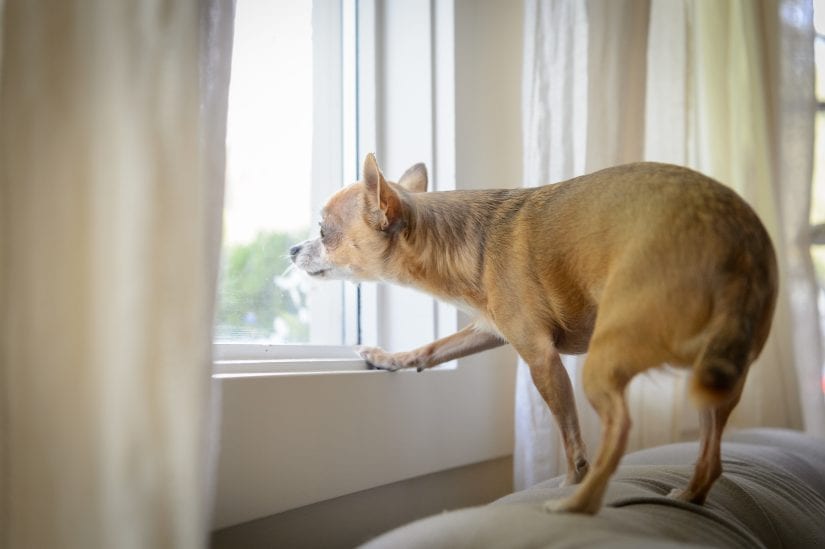
Signs of anxiety are specific to the individual dog, but can include: panting, excessive yawning, restlessness, inability to pay attention, repetitive behaviours, shaking, loss of appetite, or extreme attention-seeking behaviours. In some dogs, anxiety is manifested by social withdrawal, avoidance behaviours, or a profound lack of behaviour (‘shut-down’ behaviour).
A sign of separation anxiety could be any destruction or damage the dog may have done while you were away from the house. Additionally, since dogs are so attuned to your habits and routines, they might even start to cry or show signs of nervousness as you prepare to dress and leave the home. They might even bark as soon as you close the door and/or rush to the window to see you go. Alternatively, they could shut down and withdraw in anticipation of you leaving.
If your dog shows signs of anxiety, says Dr. van Haaften, the first step should be to rule out underlying medical causes. “Your pet may not be suffering from anxiety, but may have a medical condition that is causing pain or distress,” she says. “Several studies in recent years have found a link between anxiety conditions such as noise phobia and painful conditions such as arthritis. Once you have ruled out a medical cause for the symptoms, observe your dog closely to identify their specific anxiety triggers so that you can begin to address them.”
Start to leave your house more frequently
In order to prepare your dog for your absence, start leaving the house more frequently, increasing the duration each time. Maybe it’s simply going out for an afternoon stroll or running some errands. The point is, to get your dog used to the idea of you being away, and understanding that you always come back.

Go back to your old routine
Undoubtedly your routine has changed due to the pandemic. Your walks might be more or less frequent and/or sporadic. Maybe your dog is eating later along with your pandemic snack time. In order to help your dog adjust to what’s to come, it’s a good idea to return to your old routine or at least one that’s similar to what they can expect when you return to work.
For example, if you’re due to be at work at 9 a.m., reinstitute a feeding and exercise schedule that would occur beforehand to align with your new schedule. If normally you would walk them after work at 5 p.m., pick up the habit again.
Another tip: you might even want to leave the house at your typical time of departure in the morning even if it’s just to go for a short walk. It could help your pup get used to you leaving at that time.
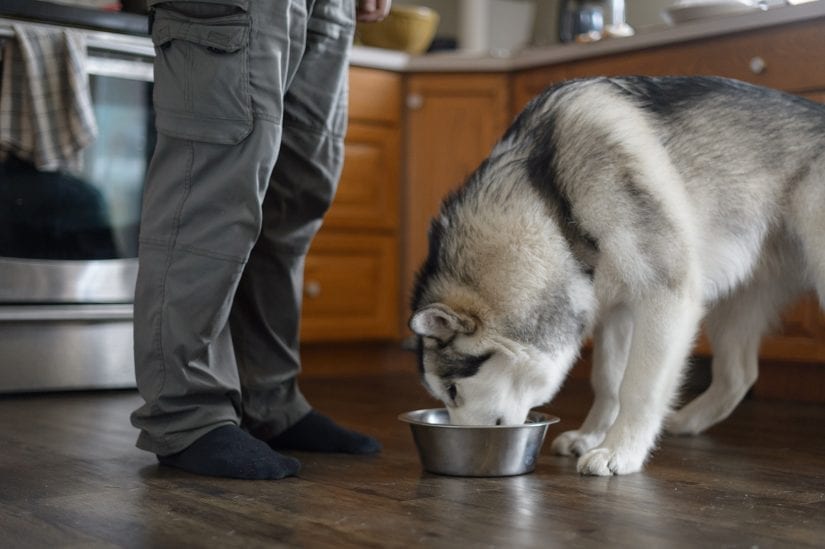
Keep them occupied
In order to prevent your pet from being bored, it’s a good idea to ensure they’ve had a decent bout of exercise before you leave the house. In addition, leave activities, like interactive puzzles, and toys available to your dog in order to keep themselves busy. Anything from a favourite chew toy or a kong filled with treats will do. This way they will resist gnawing on any furniture or from barking or crying if they’re bored.
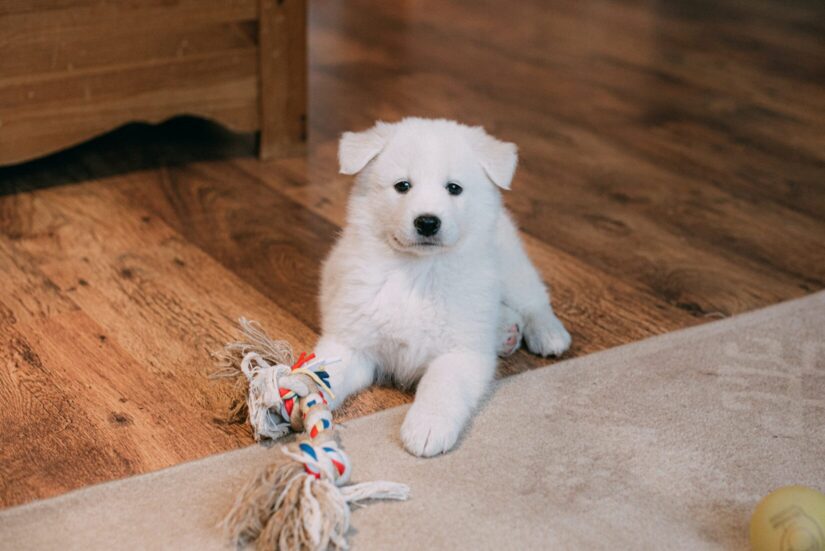
Give them a space of their own
Your pet’s security is number one while you’re away from the home. Having a space to call their own might help make the transition easier on them by creating some much-needed comfort and safety. If they don’t already have a crate or dog bed that they love, you might want to help create a special place for them before you go by encouraging them to spend some time there with toys and treats.
Additionally, if your dog normally spent their time in a crate or in a pet-friendly “zone” while you were away at work, you may want to consider having them take their naps there again. This might help them get used to you not being close to them throughout the entire day (even though that might be hard to do!).
Giving your dog their own space that they can freely access is not the same thing as putting a dog in their own space when they might not choose to be there. Putting any animal in a space that they aren’t comfortable with can cause anxiety. For example, for a dog with separation anxiety, being in a crate with the door closed or closing a dog in a room alone can actually increase their level of stress. So make sure they are going in their space willingly and are comfortable with it.

Know help is available
Doing the work alone while adjusting to the new routines might be challenging. Suppose you are not able to resolve separation-related behaviours by yourself. In that case, a professional dog trainer who uses positive reinforcement methods can help you address the issues in a way that is effective but kind to you and your dog.
We have a list of AnimalKind accredited trainers available to work with you online or in person. Many are specialized in dealing with separation anxiety.
Give it time
Being away from your dog is bound to be a difficult transition for you both. Enjoy the time together now while you slowly ease them back into your old “new normal” routine. Remain patient with them as you help them with this huge change, and don’t forget to make the most of every moment you have together before and after your return to work.
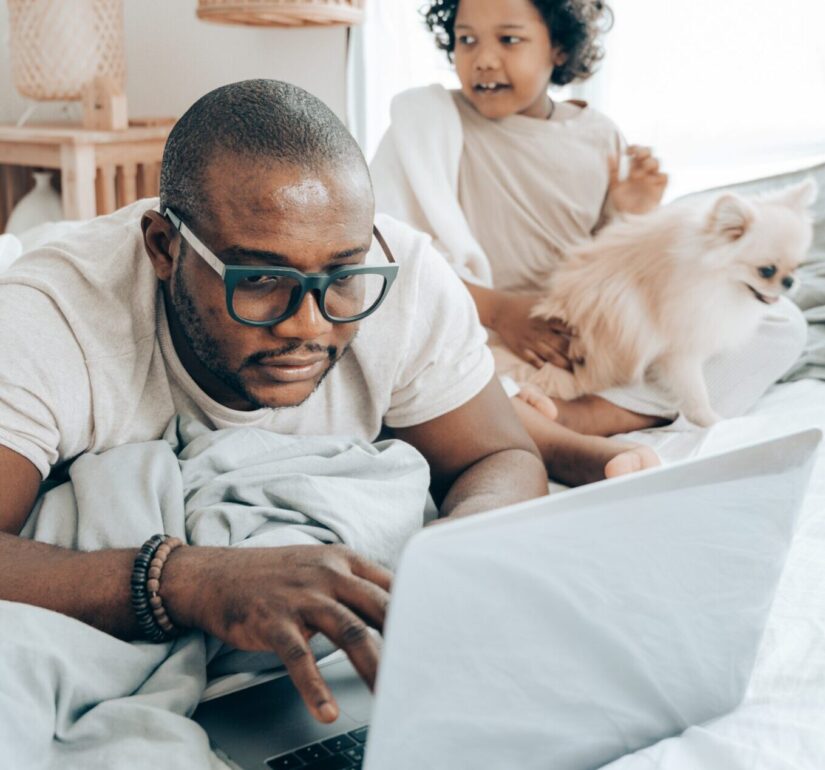
More tips
How to prevent separation anxiety in dogs
5 Ways to keep your dog entertained at home
How do I welcome a new dog into my home?

